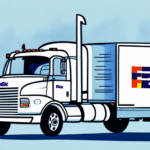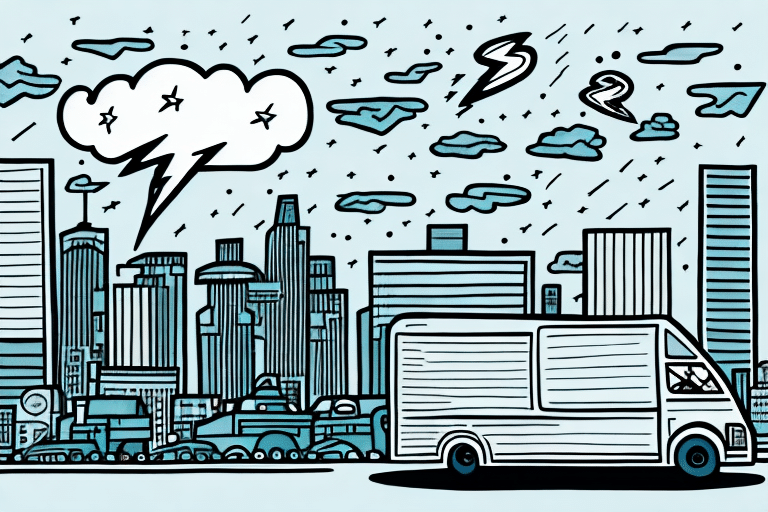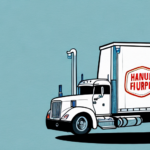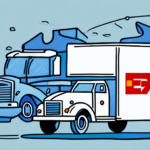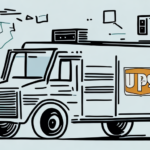Understanding the FedEx Extended Area Delivery Fee
If you frequently ship packages through FedEx, you may have noticed a charge called the "Extended Area Delivery Fee" on your invoices. This fee, which is applied to certain shipments, can be confusing and frustrating for many customers. In this article, we'll examine everything you need to know about the FedEx Extended Area Delivery Fee, including what it is, how it works, who pays for it, and how to avoid it.
What is the FedEx Extended Area Delivery Fee?
The Extended Area Delivery Fee is a surcharge applied to packages destined for locations outside of FedEx’s standard delivery areas. These extended areas typically include remote or rural locations, as well as certain commercial or industrial zones that are difficult to access.
This fee is charged in addition to the regular shipping costs and varies based on factors such as the package's weight and size, the selected shipping service, and the destination.
It's important to note that the Extended Area Delivery Fee is not unique to FedEx. Other shipping companies, like UPS and USPS, also impose similar fees for deliveries to hard-to-reach areas, though the specific criteria for what constitutes an extended area may differ between carriers.
To determine if your destination is subject to this fee, you can use FedEx's online delivery area tool to check your destination zip code. This proactive step can help you anticipate and budget for any additional charges.
How Does the FedEx Extended Area Delivery Fee Work?
FedEx calculates the Extended Area Delivery Fee based on the shipping address and the type of service selected. The company maintains a detailed map of all extended areas, referred to as "out of delivery areas." When you schedule a shipment, FedEx's system automatically checks the destination address against this map to determine if the surcharge applies.
If your package is destined for an extended area, the surcharge is added to the total shipping cost. Additionally, if the originally selected delivery service is unavailable in the extended area, FedEx may transfer the package to a different service or carrier to complete the delivery, potentially incurring additional fees.
Customers can avoid this fee by opting to have their package held at a FedEx location for pickup. This option is available for both domestic and international shipments and can help save money while ensuring secure delivery.
Keep in mind that the Extended Area Delivery Fee is subject to change. Always check the latest fees on the FedEx website or consult with a customer service representative for the most accurate information.
Who Pays for the FedEx Extended Area Delivery Fee?
The Extended Area Delivery Fee is typically charged to the customer shipping the package. Whether you're a business or an individual sender, you will be responsible for this surcharge if your package is being delivered to an extended area. In some rare instances, the recipient may be asked to pay the fee upon delivery, but this is uncommon.
The cost of the fee can vary significantly depending on the destination and the service used. Smaller shipments might incur a modest surcharge, while larger or heavier packages could result in higher fees. It's essential to factor in this expense when calculating your overall shipping costs, especially for bulk or heavy shipments.
Additionally, the Extended Area Delivery Fee is just one of several possible surcharges from FedEx. Other fees can include fuel surcharges, residential delivery fees, and Saturday delivery fees. Reviewing all potential charges before finalizing your shipment can help prevent unexpected costs.
Strategies to Avoid the FedEx Extended Area Delivery Fee
Consolidate Your Shipments
By consolidating multiple shipments into a single package, you can reduce the number of deliveries to extended areas, thereby minimizing the total surcharge.
Use Alternative Carriers
Consider using other shipping carriers that may offer more competitive rates for deliveries to extended areas. Some carriers specialize in remote deliveries and might provide cost-effective solutions.
Negotiate with FedEx
If you are a frequent shipper or have a long-term relationship with FedEx, you might be able to negotiate lower rates or have the Extended Area Delivery Fee waived. Contact a FedEx representative to discuss potential discounts.
Choose FedEx Hold for Pickup
Opting to have your package held at a FedEx location for pickup can help you avoid the surcharge. This method not only saves money but also ensures secure delivery.
Implementing these strategies can help you manage and potentially reduce your shipping costs associated with the Extended Area Delivery Fee.
The Impact of the FedEx Extended Area Delivery Fee on Your Shipping Costs
The Extended Area Delivery Fee can significantly affect your overall shipping expenses, especially for businesses that regularly send packages to remote locations. For larger or heavier shipments, this fee can add up, impacting your bottom line.
However, it's essential to weigh the cost of the surcharge against the benefits of using FedEx's reliable and extensive delivery network. In some cases, the convenience and speed of FedEx may justify the additional expense.
Additionally, the fee varies by destination, meaning some areas may incur higher surcharges than others. Understanding these variations can help you make informed decisions about your shipping strategy and potentially adjust your delivery areas to minimize costs.
Comparing Extended Area Delivery Fee with Other FedEx Surcharges
Beyond the Extended Area Delivery Fee, FedEx imposes several other surcharges that can affect your shipping costs:
- Additional Handling Surcharge: Applied to packages that are large, heavy, or awkwardly shaped, requiring extra handling.
- Residential Delivery Surcharge: Charged for deliveries to residential addresses rather than commercial ones.
- Fuel Surcharge: Adjusts shipping costs based on fluctuations in fuel prices.
Understanding the differences between these fees is crucial for accurately calculating your shipping costs and identifying potential areas where you can save money.
Practical Examples and Calculations
To illustrate how the Extended Area Delivery Fee affects your shipping costs, consider the following examples:
- Remote Rural Location: Shipping a 10-pound package to a small town in a mountainous region might incur an additional $5 surcharge.
- International Shipping: Sending a package to an island nation could result in a higher surcharge, potentially exceeding $20 depending on the destination and carrier.
- Industrial Area Delivery: Delivering to a commercial zone with limited access may add a $10 fee to your shipment.
These examples highlight the importance of checking whether your destination qualifies as an extended area and planning accordingly to manage your shipping expenses.
Calculating the Cost of the FedEx Extended Area Delivery Fee
Calculating the exact cost of the Extended Area Delivery Fee can be challenging due to various influencing factors. Generally, you can expect an additional fee ranging from $3 to $5 per package for domestic shipments within the United States. For international shipments, the fee can be significantly higher and varies based on the destination country and the carrier used.
To estimate the cost of shipping to an extended area, you can use FedEx’s shipping calculator or contact a FedEx representative. Providing details such as the package weight, size, and destination will help you obtain a more accurate estimate.
Tips for Negotiating Your FedEx Shipping Rates to Avoid Extra Fees
Negotiating your shipping rates with FedEx can help you reduce costs and avoid fees like the Extended Area Delivery Fee. Here are some effective strategies:
- Consolidate Shipments: Reduce the number of packages sent to extended areas by combining multiple orders into a single shipment.
- Use Alternative Carriers: Explore other shipping companies that may offer more favorable rates for deliveries to remote locations.
- Adjust Shipping Schedules: Avoid peak shipping times when rates are typically higher to secure better pricing.
- Negotiate Long-Term Contracts: Discuss long-term agreements with FedEx that include discounted rates or waived fees for consistent business.
By implementing these tactics, you can negotiate more favorable shipping terms with FedEx, ensuring that your shipping costs remain manageable even when delivering to extended areas.




